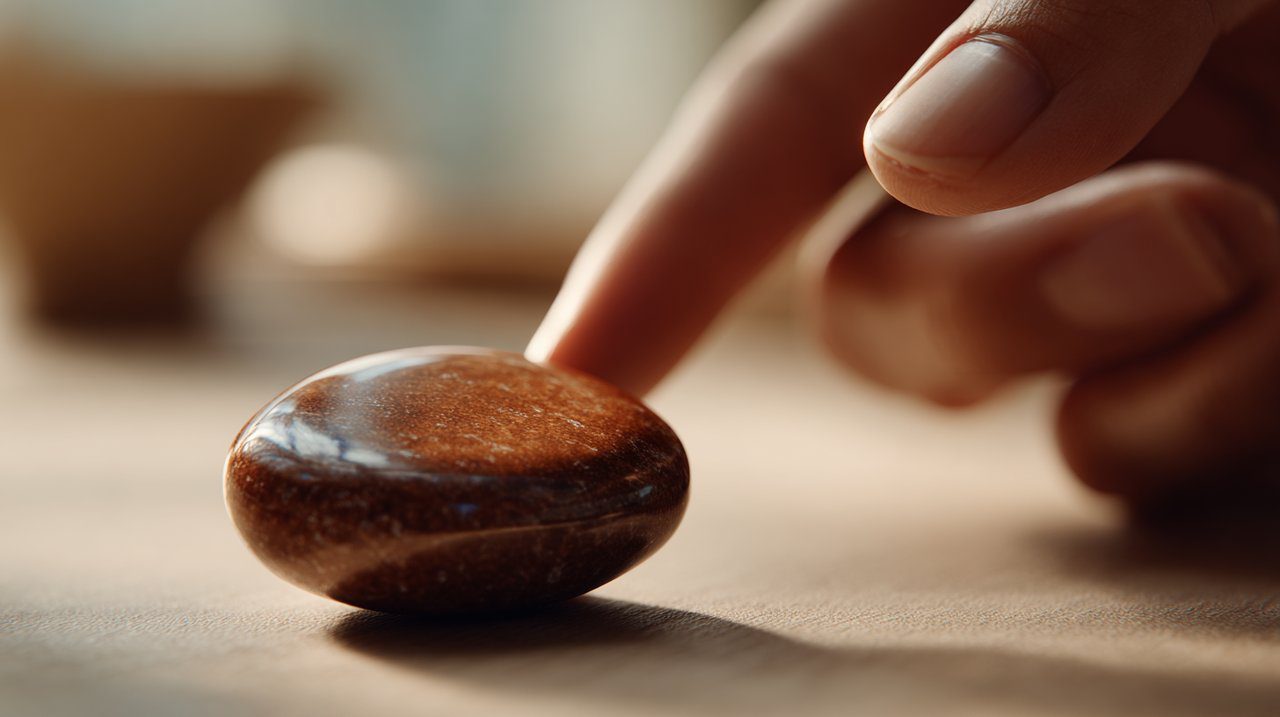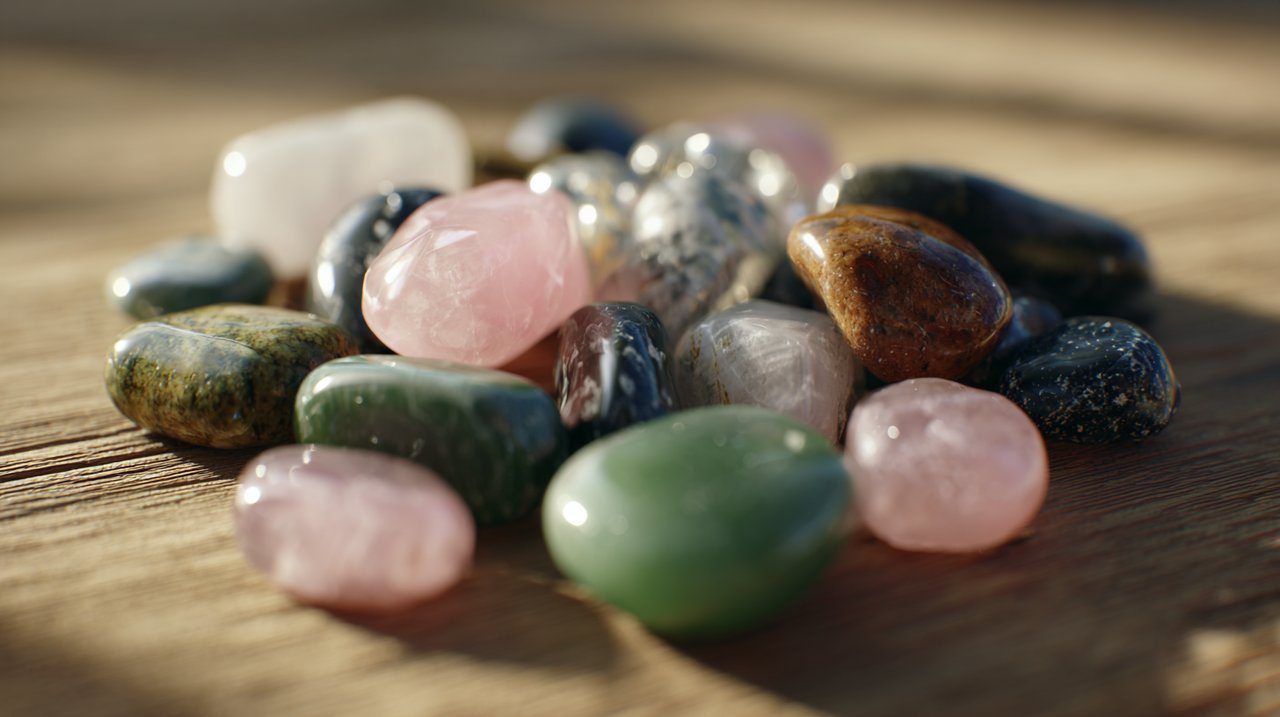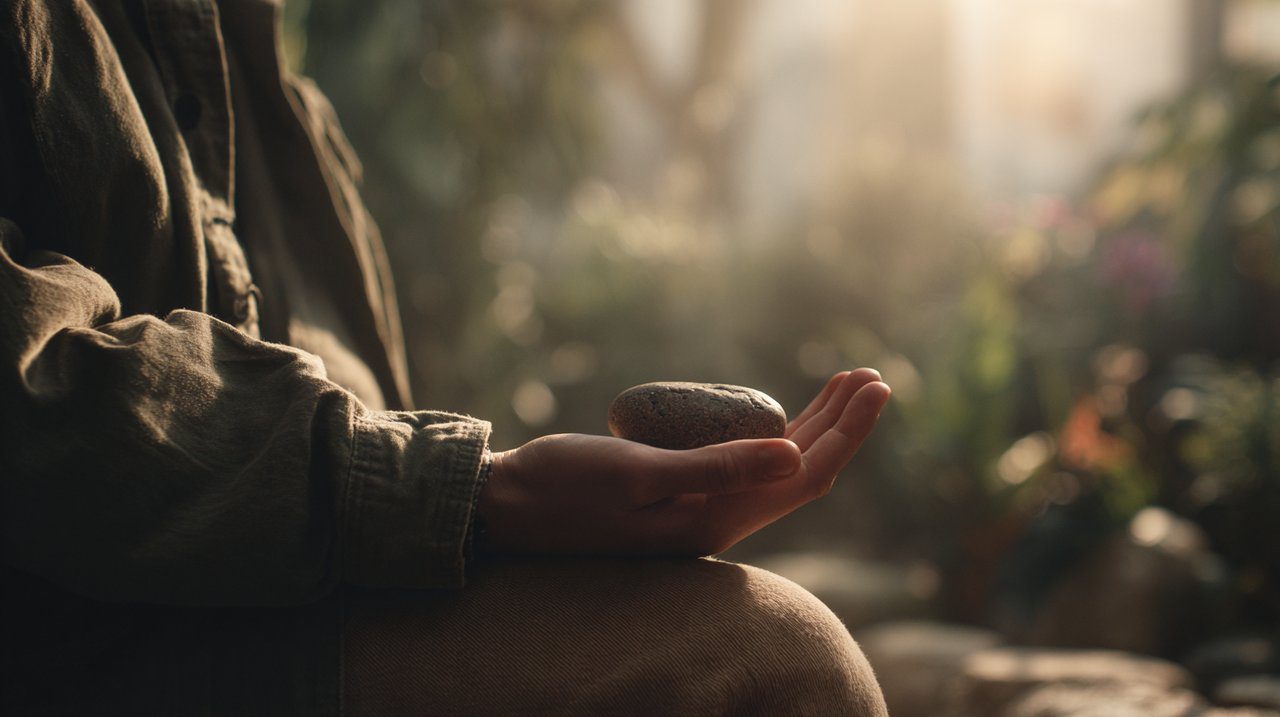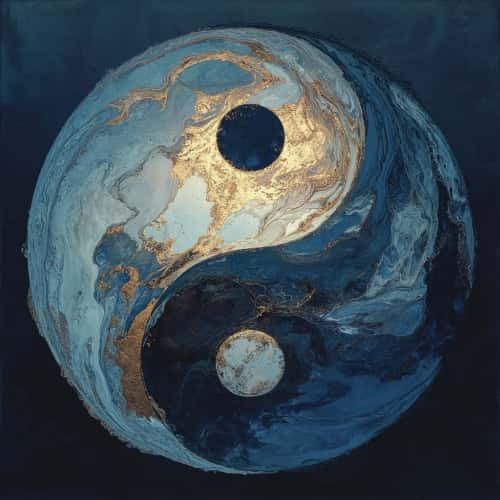Worry Stones Meaning: How Can These Tactile Tools Enhance Your Well-being?
In our fast-paced world, where demands feel relentless and stress often escalates, finding simple yet effective ways to feel grounded and calm is more important than ever. We naturally seek tactile comfort as a refuge from feeling overwhelmed.
This is where worry stones come in. They’re profoundly simple but offer a powerful way to tap into that natural human inclination for a greater sense of well-being.
It’s truly fascinating, isn’t it, how such a small, smooth object can hold so much potential? We might wonder: what is it about these unassuming stones that helps us cut through mental noise and find a moment of peace? Let’s dive into the ‘why’ behind their enduring appeal.

Understanding Worry Stones: A Timeless Aid for Calm
Form and Purpose
Worry stones are wonderfully simple, yet incredibly effective tools. Typically oval and smooth, they feature a subtle indentation designed for you to rub between your thumb and forefinger.
This specific design encourages a discreet, repetitive motion. Think of it as a gentle focal point for your senses, helping to redirect your attention away from inner turmoil. This consistent, gentle tactile input sends a powerful signal to your nervous system, encouraging it to calm down.
The core idea is straightforward: by offering a steady, gentle sensory anchor, worry stones help to quiet that incessant mental chatter. They promote a sense of grounded tranquility, which is a powerful and very natural act of self-soothing.
A Legacy of Calm: Historical Roots
The idea of using tactile aids for calming isn’t new at all; it’s a concept deeply woven into human history. We see it echo across diverse cultures and ancient practices.
From the *komboloi*, or worry beads, of Ancient Greece to the smoothed comfort stones found in Native American traditions, these objects have long served as tangible anchors. They offered a physical connection to the present moment, providing solace amid mental distraction and even historical turbulence.
This cross-cultural consistency is quite telling, suggesting a universal human need for such tactile tools to help us manage our inner states.

The Science and Psychology of Tactile Grounding
Mechanisms of Calm: How They Work
Worry stones are much more than just a simple fidget tool; they represent a potent self-soothing mechanism deeply rooted in human psychology. The repetitive motion of rubbing the stone provides what we call ‘competing sensory input.’
This effectively diverts your mental energy away from distressing thoughts and patterns. It’s a technique often used in cognitive behavioral strategies, offering a tangible, physical distraction from overthinking or rumination.
What’s happening on a deeper level? This gentle, consistent tactile engagement actually signals safety to your brain. It actively stimulates your parasympathetic nervous system, which is responsible for promoting deep relaxation. Research consistently supports how effective tactile stimulation is for stress reduction and emotional regulation. By consciously engaging our sense of touch, we can genuinely shift our physiological state.
For those who struggle with focus, worry stones offer a discreet and effective way to channel nervous energy. By grounding you in the present moment, they allow your mind to settle, which can significantly enhance concentration and mental clarity. This makes them truly valuable tools for managing anxiety and cultivating inner peace.
Cross-Cultural Echoes
The idea of using tactile aids for mental and spiritual well-being truly is a recurring theme across cultures worldwide. We see similar principles at play in tools like prayer beads or rosaries, where tactile engagement helps sustain focus during meditation or prayer.
This ancient wisdom highlights the importance of daily balance through physical anchors. It even extends to practices involving items like Feng Shui rings, which Alex Chen, as a Feng Shui enthusiast, would certainly appreciate for their symbolic grounding.
Ultimately, a worry stone becomes a tangible representation of your intention for calm, clarity, or mindful presence. It beautifully mirrors the profound benefits that simple, physical, contemplative tools can bring into our lives.

Integrating Worry Stones for Enhanced Well-being
Practical Integration Strategies
Adding a worry stone to your daily routine is a wonderfully practical and discreet step toward proactive stress management and boosting your personal energy. Their subtle nature means they fit seamlessly into almost any setting, from a busy office to your quiet meditation space.
The real power of a worry stone comes from using it consistently and with intention. Here are some actionable ways to integrate one into your life:
- Keep it Accessible: Make sure your worry stone is always within reach. Perhaps on your desk, tucked in your pocket, or by your bedside. The idea is for it to feel like a natural, accessible part of your personal toolkit for calm.
- Engage Mindfully: When you feel stress or anxiety creeping in, consciously reach for your stone. Take a moment to really focus on its unique texture, its temperature, and the soothing, repetitive motion of your thumb. This transforms unconscious fidgeting into a purposeful, calming exercise—a truly active form of mindfulness.
- Use it as a Mindfulness Anchor: Incorporate the stone into your meditation sessions or during short mindfulness breaks. The tactile sensation offers a powerful anchor, gently guiding your attention back to the present moment whenever your mind starts to wander.
By anchoring your focus with these simple actions, you’ll discover a tangible way to navigate challenging moments. It’s quite similar to how other spiritual symbols can offer profound anchors when we feel uneasy.
7 Spiritual Symbols to Anchor Your Soul in Times of AnxietyChoosing Your Worry Stone
Choosing a worry stone is often a deeply intuitive and personal experience. Different materials are traditionally believed to hold unique gemstone properties that can amplify the stone’s effect. For example, rose quartz is often linked with calm and compassion, jade with balance and harmony, and obsidian with grounding and protection.
Now, from a more rational, psychological perspective, these associations act as powerful positive suggestions. Your belief in a stone’s calming properties can actually enhance its effectiveness, boosting what we might call a ‘placebo effect,’ making the tactile experience even more impactful.
It’s interesting how, in Feng Shui, obsidian is highly regarded for its ability to help dispel negative energy—a quality shared by many black stones and crystals. This isn’t magic; it’s about the powerful combination of focused intention and symbolic association.
Ultimately, the most effective worry stone for you will be the one that resonates most deeply. Your personal connection to the stone significantly enhances its perceived value and utility, truly transforming it into a powerful personal talisman for calm and clarity.
Understanding the profound, yet subtle, meaning of worry stones truly empowers you to integrate this simple tool into your daily strategy for holistic well-being. They offer a timeless and accessible pathway to cultivating inner calm and sustained focus, especially in our demanding world.
By embracing their simple yet profound power, you gain a tangible ally on your journey toward enhanced well-being. So, go ahead and discover the stone that speaks to you—it might just help you unlock a deeper sense of presence and tranquility in your life.
💡 Frequently Asked Questions
Worry stones are small, smooth, typically oval-shaped objects with an indentation designed for the thumb. They work by providing a tactile focus point, allowing for a repetitive, soothing motion when rubbed between the thumb and forefinger, which helps calm the nervous system and redirect attention from internal turmoil.
The concept of tactile calming aids like worry stones has historical roots across various cultures. Ancient Greeks used smooth stones or komboloi (worry beads), and Native American traditions involved smoothing stones for comfort or during contemplative practices, serving as physical anchors to the present moment.
From a psychological perspective, rubbing a worry stone acts as a self-soothing mechanism. It can interrupt anxious thought patterns, activate the parasympathetic nervous system to promote relaxation, and enhance focus by providing a discreet outlet for nervous energy.
To incorporate a worry stone, keep it in easily accessible locations like your desk or pocket. When stress or anxiety arises, consciously reach for it and focus on its texture and the smooth rubbing motion. It can also serve as a mindfulness aid during meditation to anchor you to the present moment.
Choosing a worry stone often involves an intuitive connection. While various materials like rose quartz, jade, or obsidian are suggested for their energetic properties, the most effective stone is ultimately the one you feel personally drawn to, as this connection enhances its perceived value and utility.








